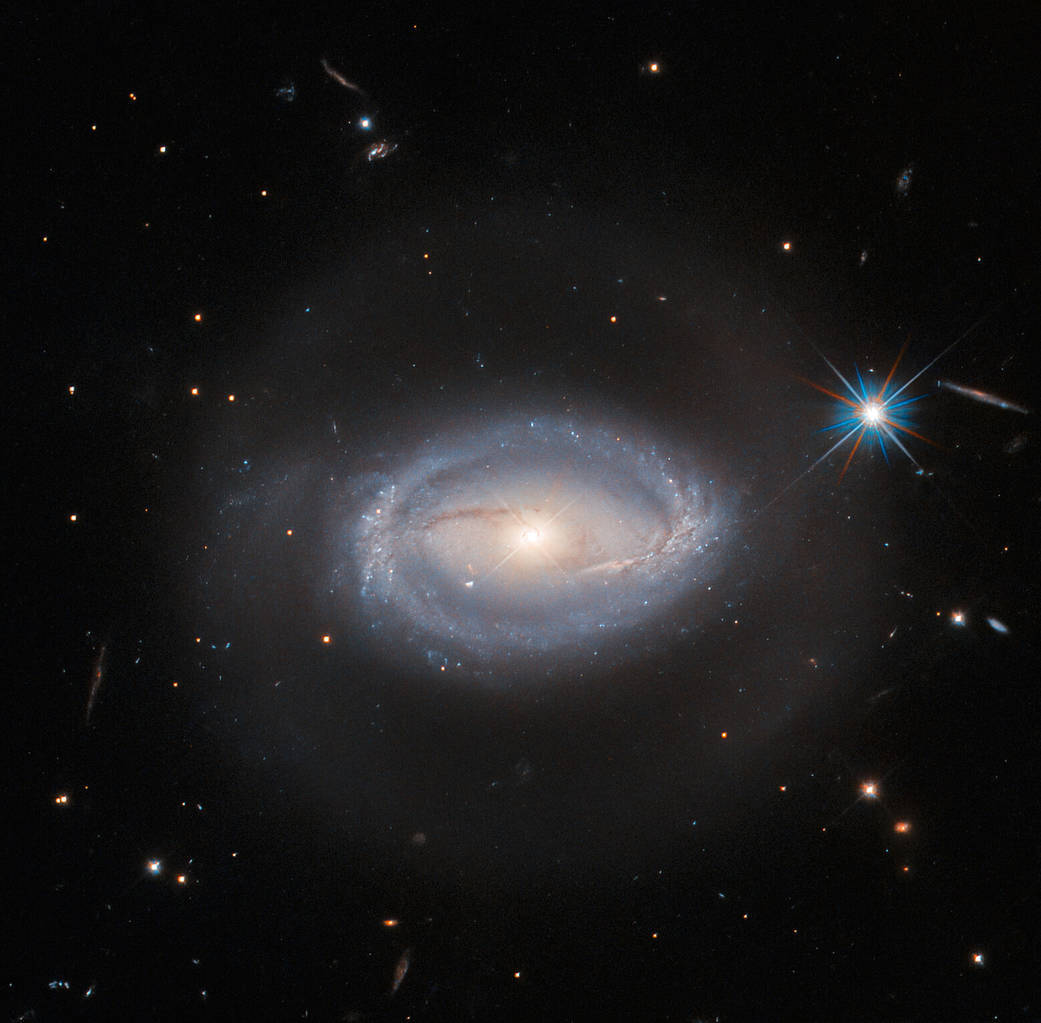2.04.2023

This luminous image from the NASA/ESA Hubble Space Telescope shows Z 229-15, a celestial object that lies about 390 million light-years from Earth in the constellation Lyra. Z 229-15 is one of those interesting celestial objects defined as several different things: sometimes as an active galactic nucleus (an AGN); sometimes as a quasar; and sometimes as a Seyfert galaxy. Which of these is Z 229-15 really? The answer is that it is all these things all at once, because these three definitions have significant overlap.
An AGN is a small region at the heart of certain galaxies (called active galaxies) that is far brighter than just the galaxy’s stars would be. The extra luminosity is due to the presence of a supermassive black hole at the galaxy’s core. Material sucked into a black hole doesn’t fall directly into it, but instead is drawn into a swirling disk, from where it is inexorably tugged towards the black hole. This disk of matter gets so hot that it releases a large amount of energy across the electromagnetic spectrum, and that’s what makes AGNs appear so bright.
Quasars are a particular type of AGN; they are typically both extremely bright and extremely distant from Earth – several hundred million light-years is considered nearby for a quasar, making Z 229-15 positively local. Often an AGN is so bright that the rest of the galaxy cannot be seen, but Seyfert galaxies are active galaxies that host very bright AGNs (quasars) while the rest of the galaxy is still observable. So Z 229-15 is a Seyfert galaxy that contains a quasar, and that, by definition, hosts an AGN. Classification in astronomy can be a challenge!
Text credit: European Space Agency (ESA)
Image credit: ESA/Hubble & NASA, A. Barth, R. Mushotzky
Quelle: NASA
